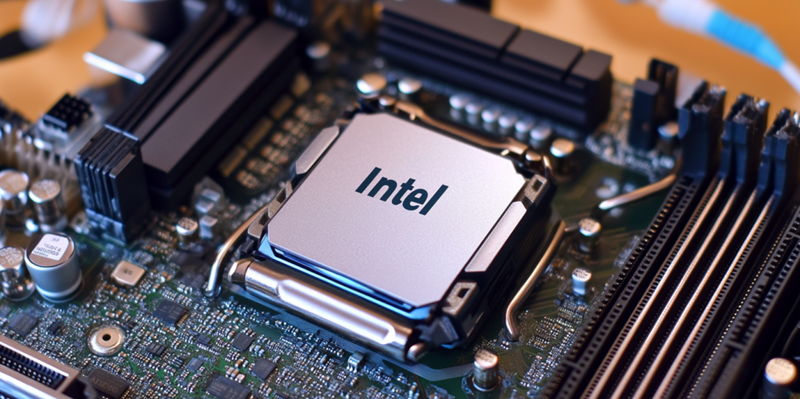Intel’s latest processor, the Core Ultra 9 285 CPU, from the Arrow Lake "Core Ultra 200S" lineup, has grabbed attention with its remarkable benchmarking results. As tech enthusiasts prepare for its official reveal at CES 2025, many are questioning if this chip represents the sweet spot for efficient performance in modern computing. With a base clock of 2.5 GHz and the ability to boost up to 5.6 GHz, this CPU is creating quite a buzz. Despite being slightly behind its unlocked "K" counterpart, it showcases significant power efficiency without a substantial compromise on performance.
The Core Ultra 9 285 CPU stands out for its solid performance metrics, particularly in multi-core benchmarking tests. Demonstrating impressive scores on Geekbench 6, it managed 3247 points in single-core tests and 20204 points for multi-core tests. These results put it on a competitive footing with its predecessor, the Core i9-14900K, making it a noteworthy contender. However, it is not just the raw performance numbers that are significant. Despite a 100 MHz lower boost clock and no hyperthreading capabilities, the Core Ultra 9 285 demonstrates the efficiency of its new design. The unit operates with just 24 threads, compared to the Core i9-14900K’s 32 threads, yet it manages to maintain commendable performance levels.
Impressive Benchmark Results and Performance Metrics
The biggest takeaway from the performance analysis of the Core Ultra 9 285 is its ability to deliver competitive results in multi-core tests, despite its relatively lower specifications. This processor operates with a base clock of 2.5 GHz on its Performance cores, which can boost up to 5.6 GHz. While this boost clock is 100 MHz lower than its "K" counterpart, it still manages to produce impressive scores. Specifically, in Geekbench 6 benchmarks, it scored 3247 points in single-core tests and 20204 points in multi-core tests, putting it neck and neck with the Core i9-14900K. This is particularly noteworthy given the Core Ultra 9 285 operates with 24 threads, compared to 32 threads in the Core i9-14900K.
Furthermore, its locked design and lack of hyperthreading haven’t hindered its multi-core performance, often a significant lacuna in CPUs with similar constraints. These performance metrics suggest Intel has incorporated substantial improvements in chip efficiency, allowing the Core Ultra 9 285 to punch above its weight. The processor’s effective handling of multi-core workloads indicates potential savings in both energy and long-term operational costs, a vital consideration for users looking to build power-efficient systems. This balance between performance and efficiency is setting a new standard for what users can expect from their computing hardware.
Efficiency and Power Consumption
One of the key themes in the performance analysis of the Core Ultra 9 285 is its impressive efficiency. As technology continues to evolve, energy efficiency has become a crucial factor, particularly with the growing focus on sustainability and energy conservation. The CPU’s thermal design power (TDP) is rated at 65W for PL1 and peaks around 190W for PL2. This is significantly lower than the Core i9-14900K, which has a base TDP of 125W and can peak at 253W. These efficiency gains suggest Intel’s focus on optimizing power consumption without compromising on performance.
The advancements in Intel’s chip design are particularly apparent when observing the Core Ultra 9 285’s multi-core test results. Despite its lower power consumption, it still achieves competitive multi-core scores, highlighting its proficiency in handling multi-threaded tasks efficiently. This makes it an ideal candidate for power-constrained or low TDP systems, providing robust performance without draining excessive power. This blend of performance and energy efficiency is especially valuable for modern applications, ranging from consumer desktops to enterprise-level workstations. This efficiency is not just a benefit in terms of reduced electricity bills but also in minimizing the environmental impact of technology usage.
Comparative Analysis with Existing Models
The leaked benchmark results place the Core Ultra 9 285 CPU among the top performers, including models like the Ryzen 9 9950X and its high-powered sibling, the Core Ultra 9 285K. This comparison provides a clearer perspective on where the Core Ultra 9 285 stands in the current market landscape. The Core Ultra 9 285K leads the pack with scores of 3449 (single-core) and 23024 (multi-core). It is followed closely by the Ryzen 9 9950X, scoring 3359 (single-core) and 20550 (multi-core). The Core Ultra 9 285 showcases competitive performance with 3296 (single-core) and 20204 (multi-core), while the Core i9-14900K and Ryzen 9 7950X lag slightly behind.
Despite its lower thread count and power consumption, the Core Ultra 9 285 holds its ground, showcasing its ability to mix performance and efficiency effectively. This becomes more impressive when considering the unit’s power efficiency, which places it at a distinct advantage over some of its higher-powered competitors. When juxtaposed against both Intel’s own lineup and competitive AMD offerings, this balance of performance and efficiency is an indicator of the substantial advancements Intel has made.
Market Implications and Strategic Positioning
Intel’s latest processor, the Core Ultra 9 285 CPU from the Arrow Lake "Core Ultra 200S" lineup, has turned heads with its impressive benchmarking results. With anticipation building for its official unveiling at CES 2025, many tech enthusiasts are eager to see if this chip marks the sweet spot for efficiency and performance in modern computing. Boasting a base clock of 2.5 GHz and the capability to boost up to 5.6 GHz, this CPU is generating significant excitement. Although it’s slightly behind its unlocked "K" version, it achieves notable power efficiency without sacrificing much in performance.
The Core Ultra 9 285 excels in performance metrics, especially in multi-core benchmarks. Scoring 3247 points in single-core and 20204 points in multi-core on Geekbench 6, it stands competitively alongside its predecessor, the Core i9-14900K. Impressively, despite having a 100 MHz lower boost clock and lacking hyperthreading, this new CPU demonstrates the improved efficiency of its design. Operating with just 24 threads compared to the Core i9-14900K’s 32, it still manages to deliver commendable performance, making it a worthy contender in the landscape of high-performance processors.

